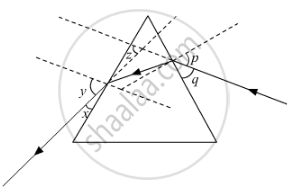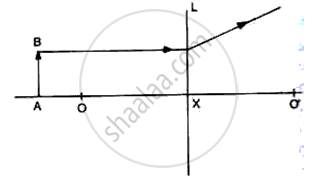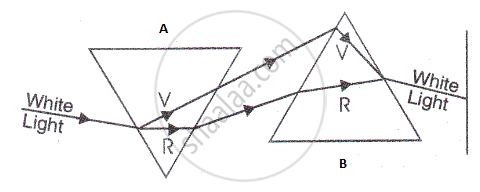Advertisements
Advertisements
Question
Study the following ray diagram:

In this diagram, the angle of incidence, the angle of emergence and the angle of deviation respectively have been represented by
(A) y, p, z
(B) x, q, z
(C) p, y, z
(D) p, z, y
Solution
Angle p is the angle of incidence since this angle is formed between the incident ray and the normal.
Angle y is the angle of emergence as it is formed between the emergent ray and the normal.
and angle z is the angle of deviation as it is formed between the emergent ray and the incident ray.
Hence, the correct answer is p, y, z
APPEARS IN
RELATED QUESTIONS
State the cause of dispersion of white light
In the formation of spectrum of white light by a prism:
which colour is deviated least?
In the figure given alongside, a narrow beam of white light is shown to pass through a triangular glass prism. After passing through the prism, it produces a spectrum YX on the screen.
State the colour seen (i) at X, and (ii) at Y.
Why do you not see a spectrum of colours when light passes through a flat pane of glass?
- A beam of monochromatic light undergoes minimum deviation through an equiangular prism, how does the beam pass through the prism, with respect to its base?
- If white light is used in the same way as in part (a) above, what change do you expect in the emergent beam?
- What conclusion do you draw about the nature of white light in part (b)?
Refer to fig
(i) Name the lens L.
(ii) What are the points O, O' called?
(iii) Complete the diagram to form the image of the object AB.
(iv) Write three characteristics of the image.

Complete the ray diagram given below to show the nature of light produced on the screen.
The completed ray diagram is as shown below:

Suggest one way, in each case, by which we can detect the presence of Infrared radiations.
Observe the given figure and write appropriate phenomenon of light in the box.

The splitting of white light in to seven colors is called ______.
